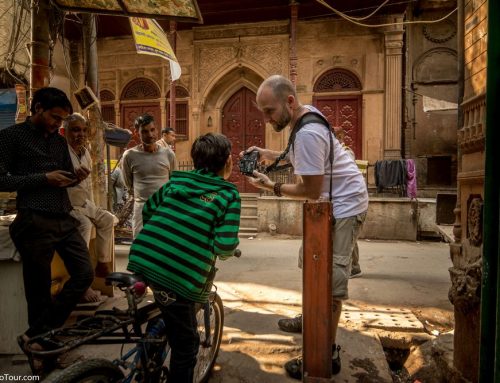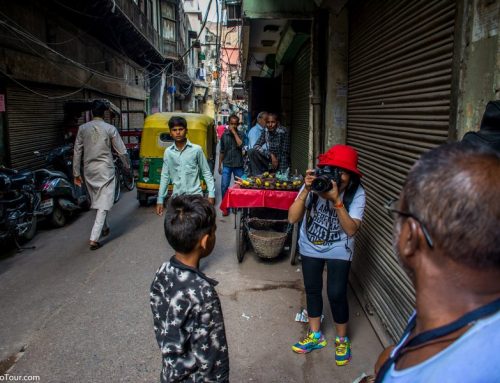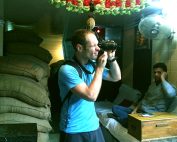1. Relationship of Texture and Lighting

The effect of texture can often be emphasized or negated with the proper use of lighting. Placing the light on the side or at an angle increases the emphasis on texture, whereas placing it dead in the front negates its effect by a large margin. The light should be placed at an angle in order to lay emphasis on a particular aspect of the subject.
2. Light is softer when the source is closer
Moving the source away makes the light harder. Moving the source closer makes it bigger and broader with respect to the subject. Moving it farther away makes it smaller and narrower. The diameter of the sun is 109 times compared to that of the Earth but since it is 93 million miles away, it commands a smaller area in the sky. Therefore the light it casts on a subject is harder. Moving lamps closer to the subject will provide a more flattering effect, while clicking pictures indoors.
3. Light is softer and broader when it is scattered due to diffusion

Clouds and fog act as a diffuser and shadows get less distinct or disappear completely, respectively. They diffuse the sunlight and scatter it in multiple directions, making it broader and softer. They are nature’s softbox. There are various equivalents that can be used in indoor photography, for instance translucent plastic or a soft white fabric over the source of light. On days with less cloud cover, a light tent can be used to induce the same effect outdoors.
4. Light diffuses if it is bounced off an object
Broad matte surfaces,like walls, can be used as diffusers for not only reflecting the light but scattering them over a particular area. Shiny surfaces like mirrors reflect the maximum amount of light and it remains fairly narrow. Crumpled aluminum foil spread flat over a piece of cardboard acts as the best of both worlds. It is not very absorbent and adds a sparkle highlight.
5. Volume can be created by shadows

Three-dimensionality as explained by photographers is the sense of observing an image as an object in space instead of seeing it as projected on a flat surface. An image with volume. Positioning the light at the side, above or below casts deeper and longer shadows that creates the sense of volume. Landscape, still-life and product photographers use angled light to achieve this effect.
6. Light on the background and the subject is affected by the light falloff
Placing the light near the subject creates a more pronounced falloff on the background. Moving the light away from the subject results in the background getting brighter. The same applies to side lighting. Placing a light closer to the subject, the falloff on the background will be greater compared to when the light is moved farther away. If window light is used, the subject should be moved closer to the window in order to increase its falloff on the background and farther away if it is to be decreased.
7. Light has colour, even if it looks white
It is called colour temperature. Our eyes and brain are adept at adjusting our perception in a way that we hardly notice it. Digital sensors and film are able to detect it. The colour of light, early morning and late afternoon is quite warm. It is rather bluish at midday. Light from Tungsten light bulbs is yellow and any surface that light bounces off of adds a bit of colour to it.
Digital cameras have a white-balance control setting that can be used to neutralize color casts or even emphasize them. In the case of slide film, the right film had to be chosen or filters were used to compensate for the effect of colour casts.
Colour balance on cameras can be adjusted. On a clear day the colour balance can be set to Cloudy. This acts as a warming filter to add a more golden glow to the picture, especially in the shadows.
8. Light dims as it moves farther away

The relationship between light and its distance from the subject is inversely proportional. As the source moves farther away, more light falls off and the subject will get dimmer. This rule should be considered while moving the source of light and the subject around. Light that bounces off a surface adds to the total distance it travels, therefore using a speedlite as a fill flash is a trick to get lighter shadows on the subject on harshly lit days, without affecting the background exposure.
9. Backlight can be used as a highly diffused source of light
It is near impossible to capture fully backlit subjects. There is always some light that will fall on the front of the subject. Even if the subject is placed in front of a bright window or against the sun outdoors, light will fall on the front of the subject after being reflected off the wall in front of it or from the open sky. In either scenario, exposure needs to be increased in order to capture this light. Such diffused light de-emphasize the texture and the dimensionality of the subject. Pictures that include the source of light can be a way to add spark to a backlit portrait or silhouette. Although it will drive the meter in your camera crazy, hence it is essential to bracket your exposures.














